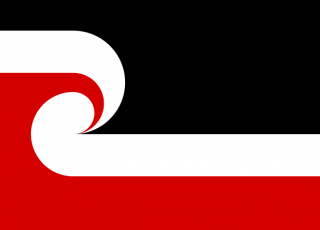Reducing and preventing violence in taitamariki Māori intimate partner relationships
Wed 24 Aug 2016
Moana Eruera's PhD thesis on reducing and preventing violence in taitamariki Māori intimate partner relationships is now available online. 'Hooked ...

Moana Eruera's PhD thesis on reducing and preventing violence in taitamariki Māori intimate partner relationships is now available online.
'Hooked up': Te hononga whaiāipo: Reducing and preventing violence in taitamariki Māori intimate partner relationships (2015) was an indigenous whānau violence prevention study that explored the supports that taitamariki Māori (Māori young people) identified would assist them to develop healthy intimate partner relationships.
Given the prevalence of intimate partner violence and the youthful demographic of the Māori population (half the Māori population is under 24 years old), there is increased focus on the significance and potential of taitamariki Māori lived experiences to inform whānau violence prevention solutions and strategies for improved whānau wellbeing.
The study sought to understand taitamariki Māori perspectives on intimate partner relationships and violence, in order to co-construct an indigenous youth theory of change to inform Māori and indigenous violence prevention activities. The aim was to provide whānau, hapū (sub-tribe), iwi (tribe), and those working in the field of family violence and related sectors with information to assist in identifying effective strategies.
The study was based with Te Rūnanga ā Iwi o Ngāpuhi (Ngāpuhi tribal authority) and engaged with taitamariki Māori living within the Ngāpuhi tribal geographical boundaries.
The study built on a pilot study, Taitamariki Māori kōrero about intimate partner violence, also carried out in Tai Tokerau by Eruera and Dobbs (2010) for the Amokura Family Violence Prevention Consortium.
Dr Eruera says in her abstract:
How young people learn behaviours, respond to these behaviours and normalise them or not is important to any prevention programme. Recently, violence prevention studies have been promoting the use of multi-level approaches as most likely to achieve the best results (Robertson & Oulton, 2008). However, indigenous researchers are advocating the need to ensure that multi-level approaches include historical and socio-cultural analysis to adequately consider and address violence prevention issues and solutions for indigenous peoples (Grennell & Cram, 2008).
This study contributes to building this knowledge base by using an approach with three key factors. Firstly, by using the Mauri Ora framework, a Māori conceptual wellbeing framework that reinforces an ecological approach that is inclusive and prioritises sociocultural and historical considerations to the analysis and transformation of violence prevention for whānau Māori and communities. This enables the conceptualisation of a Māori theory of the problem. Secondly, this research is informed and co-constructed by taitamariki voices and solutions to ensure the theory of change reflects their world, needs, aspirations and priorities. Thirdly, the study is based in a Māori tribal authority, a critical dimension of Māori social structure within today’s society that has obligations and responsibilities for the development and wellbeing of its tribal members and the wider Māori population.
For more information on dating violence and sexual violence against young people in the general population, see this Clearinghouse story:
National study reports on students' experiences of unwanted sexual contact; related resources (August 2016)
Image: Tino rangatiratanga flag


